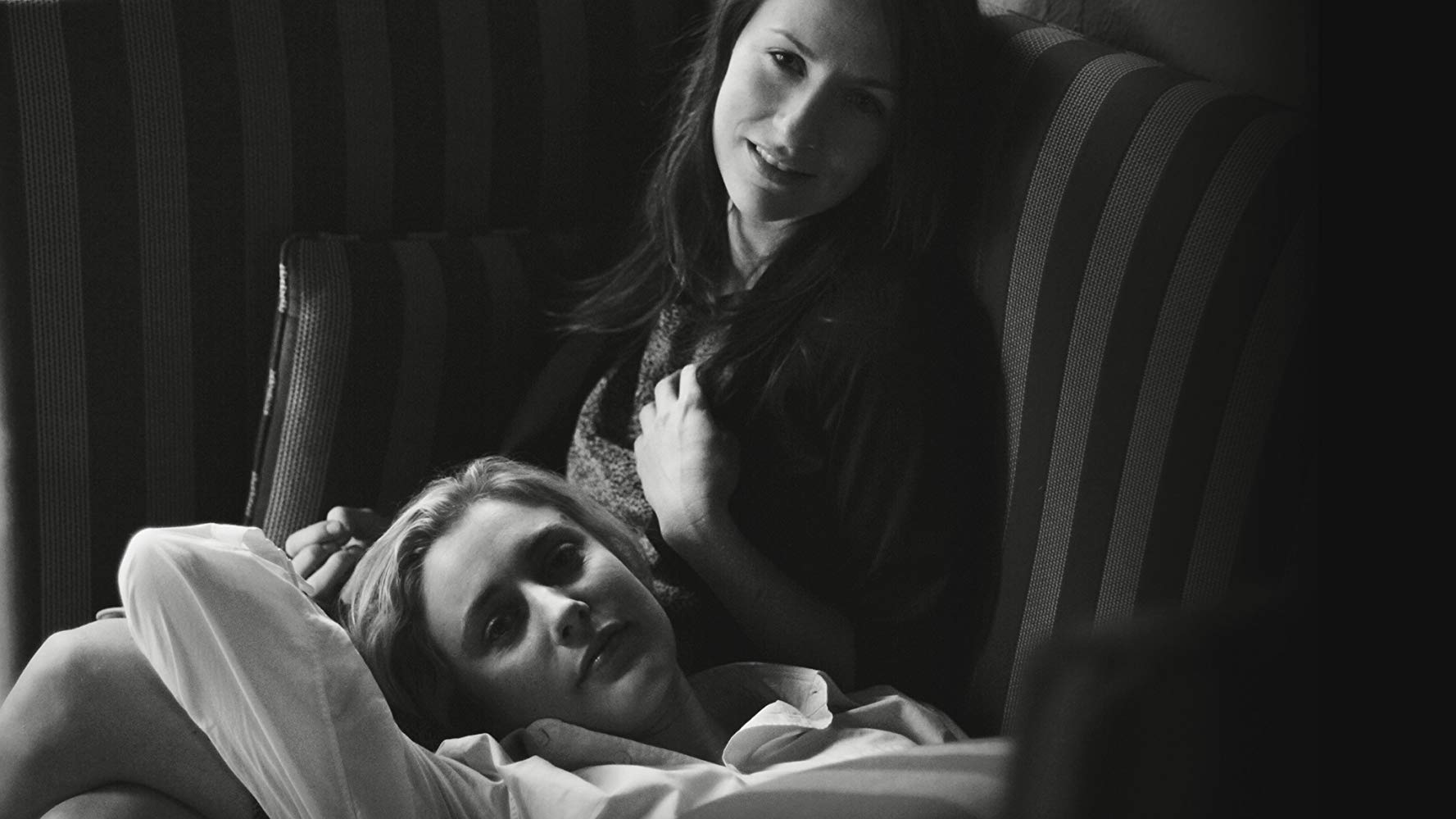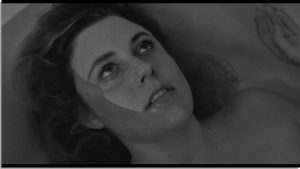It might sound quite frivolous to compare two works of fiction based on the mere fact that their protagonists share the same name, but it’s exactly that similarity that made me think of Greta Gerwig and Noah Baumbach’s 2012 late mumblecore classic Frances Ha as I was reading Sally Rooney’s debut novel, Conversations with Friends. But that’s not the only thing the two Franceses have in common. For instance, they both, appropriately, go to France at some point (Frances literally means “from France”, or “free one”). They’re both young, well-read, and struggling to figure out who they are. Their lives are in constant flux. And they’re both drawn, more than any other guy that crosses their paths, to their female best friend.
Before we dive deeper into their intimate stories, it’s worth taking a step back to look at the wider context surrounding the two works. For one thing, it’s quite remarkable that they both reached the kind of nearly mainstream status that they did – Sally Rooney’s debut quickly became a literary phenomenon, while Frances Ha became an art-house hit in the US. They are both uncompromisingly quiet, focusing on mundane conversations and lacking any kind of traditional plot. Greta Gerwig and Noah Baumbach, who co-wrote Frances Ha, are among the biggest names in the so-called ‘mumblecore’ genre – a subgenre of independent film characterized by an emphasis on naturalistic dialogue over plot and a preoccupation with the relatably aimless lives of (white, college-educated) people in their 20s.
Sally Rooney’s fiction also ticks a lot of the same boxes. She has been touted as “the first great millennial author” and the “voice of a generation”, and even compared to “hipster luminaries like Greta Gerwig.” In fact, Rooney herself indirectly acknowledges the parallels between her writing and Gerwig’s cinematic approach: at one point in Conversations with Friends, the two main characters are sitting on the sofa and “half-watching a Greta Gerwig film”, and a particular scene is referenced in which “Greta Gerwig was shoving her friend into some shrubbery as a game.” As far as I can tell, this isn’t just a reference to any Greta Gerwig film – it is a specific reference to Frances Ha.
Both Gerwig and Rooney share a common influence in films of Woody Allen. While Rooney has reservations about the man himself, what she admires about his work is that “there’s a real investment in personal relationships. There is the idea that this is a serious concern worth making serious art about – how we love other people and how we can negotiate our relationships with them.” And while Gerwig has expressed regret about working with Allen on To Rome with Love, his films have also shaped her as an artist. One of the key reference points for Frances Ha, especially in Baumbach’s direction, was Manhattan, from its black-and-white cinematography to its romantic New York setting.
Indeed, critic Andrew Lapin suggests that “there’s more than a little Allen in Baumbach. But Baumbach isn’t out to emulate his predecessor; he wants to decimate him.” Lapin goes on to elaborate on how Frances Ha subverts the Woody Allen archetype of “liberal paranoia, male chauvinism, self-righteous misanthropy, and nihilistic moods of despair,” as the character of Meryl Streep describes him in Manhattan. But my focus here will be more on how both Baumbach/ Gerwig and Sally Rooney quietly subvert the politics of intimacy, moving beyond the restrictions of Allen’s romantic comedy formula and renegotiating what it means to realistically depict a relationship between two women and paint an honest portrait a young female artist in the 21st century.
Frances Ha and Conversations with Friends don’t follow the exact same narrative. The film is about 27-year old Frances, a struggling dancer who has to find a new place to live after her best friend, Sophie, announces that she is planning to move to an apartment in Tribeca, which Frances can’t afford. Frances, on the other hand, has already turned down her boyfriend’s offer to move in with him on account of wanting to stay with Sophie, which leads to their breakup. Frances and Sophie’s relationship is clearly aromantic, but it closely resembles that of a couple: the film opens with a montage of them spending the day together around New York; Frances cooks for Sophie; reads her a quote about literature; leans her head on her shoulder on the tube. At the end of the day, Sophie falls asleep in her bed while Frances is on her computer next to her. “I should sleep in my own bed,” Frances says. “Why?” Sophie mutters, half-asleep. “Because I bought it,” she jokes. To which Sophie simply responds: “Stay.” Frances stays.
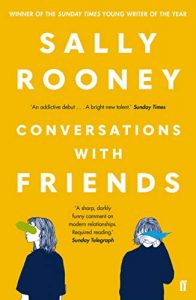
Frances’s feelings for Sophie are not sexual, but the film makes clear that she, too, is the love of her life. As Erisa Apantaku argues, Frances Ha “portrays female friendship as a meaningful form of intimacy, capable of being as important as romance.” What’s radical about the film isn’t just the lack of romance – it’s the reaffirmation of female friendship and aromantic intimacy as being just as life-sustaining. Frances and Bobbi’s relationship, on the other hand, as The New Yorker’s Alexandra Schwartz suggests, is more akin to that of Clarissa and Sally Seton in Virginia Woolf’s Mrs. Dalloway in its “passionate, consuming intimacy”, but the novelty of Rooney’s prose, I would argue, is in its metamodern portrayal of the complexities of a relationship where the boundaries between romantic and aromantic aren’t clear or fixed.
This is where we must tread on spoiler territory, so if you have not read the book or watched the film, you have been warned.
An integral part of both narratives is that Franceses’ relationship with their best friend must be tested in order for them to understand what it truly means. In Frances Ha, Frances and Sophie drift apart when Sophie moves away, and nothing can quite replace that bond for Frances. Although two men express romantic interest in her, she rejects their sexual advances. During Frances’s uneventful two-day stay in Paris that she paid for on a credit card, Sophie calls her to tell her that she and her partner will be moving to Japan. At the end of their fairly awkward conversation, Frances tells her: “I’m going to say something now but I don’t want you to feel obligated to say anything back, so I’m gonna hang up right away. I love you, Sophie. Bye.”
Frances Ha plays on the audience’s expectations about the standard romcom narrative to make a clear and original point about female friendship. In the film’s most famous scene, Frances explains what she wants out of a relationship: “that thing when you’re with someone and you love them and they know it and they love you and you know it but it’s a party and you’re both talking to other people and you’re laughing and shining and you look across the room and catch each other’s eyes. But not because you’re possessive, or it’s precisely sexual, but because that is your person in this life.”
We are led to assume that’s she talking about a romanticized meet-cute moment, despite the fact it’s “not precisely sexual.” This is exactly what happens at the end of the film, after Frances’s dance show, but it is not a love interest she is looking at. “Who are you making eyes at?” Frances’s dance instructor asks. A heart-warming smile lingers on her face, itself a little dance. “That’s Sophie,” she says. “She’s my best friend.”
Baumbach then uses the song ‘Modern Love’ to replicate a scene from Bad Blood, a film by French New Wave director Leos Carax. But as Richard Brody notes, Baumbach’s version of the scene is “utterly detached from romance” as “Gerwig runs with an uninhibitedly sunny smile, her pain allayed and her joy unfettered.” Not only does the protagonist’s happiness not depend on her love life, which the film is only tangentially interested in, but her friendship is also more than a replacement for a romantic relationship – it is fundamentally meaningful in its own right.
In Conversations with Friends, Frances doesn’t grow apart from Bobbi in the same linear fashion, nor is their conflict as clearly resolved. Like any romantic relationship in a Sally Rooney novel, their relationship has its ups and downs, and the medium of a novel gives the author more space to explore that dynamic tension than the limited runtime of a film. As in Frances Ha, their relationship’s lowest period comes when Bobbi decides she does not want to live with her anymore. But in this case, Bobbi’s decision is driven by a sense of betrayal after she finds out that Frances has published a short story about her without her knowledge.
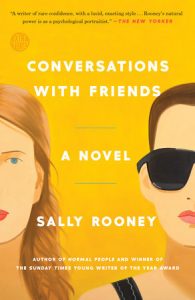
But even when Frances and Bobbi do get back together, they refuse to put a label on their relationship: “It was a relationship, and also not a relationship. Each of our gestures felt spontaneous, and if from the outside we resembled a couple, that was an interesting coincidence for us.” Somehow, Rooney manages to maintain the radicalness of that undefined relationship (“What is a friend? we would say humorously. What is a conversation?”) without undermining the genuine nature of its foundation. According to Bobbi’s post-structuralist logic, their relationship is sustained by nothing; but we as readers know that even if that is the case, there is some indescribable passion that keeps pulling them together like two faulty magnets. And Frances is helplessly caught between two ends: the intensity of feeling and her intellectual capacity to scrutinize it.
But both Rooney and Baumbach/Gerwig are still primarily invested in their protagonist’s personal journey rather than their relationships, which is radical in tself. And in that area, too, the two Franceses have a lot in common. They are both struggling artists, and while money is a bigger concern for Gerwig’s Frances throughout the film, Rooney’s Frances also goes through a period where she has practically no money. In both cases, the people they know are all better off than they are. But importantly, both Rooney and Gerwig don’t just allude to the stereotype of the struggling artist; they show the reality of it.
In fact, it is her financial status that leads Gerwig’s Frances to make a humorously existential remark about her personal identity: “I’m so embarrassed, I’m not a real person yet,” she tells her date when the waiter tells her they only take credit cards or cash. Rooney’s Frances also thinks the same about herself: when Bobbi tells her she doesn’t have a “real personality”, Frances admits to herself that mostly she agrees with that assessment. She understands her identity as performative: “At any time I felt I could do or say anything at all, and only afterwards think: oh, so that’s the kind of person I am.” At her lowest, Frances experiences an existential crisis that is a crucial turning point for her character development: “Is this me, Frances? No, it is not me. It is the others.”
As with her relationships, she inevitably embeds these thoughts about her personal identity within a wider cultural framework. “Do I abuse the unearned cultural privilege of whiteness, do I take the labour of others for granted, have I sometimes exploited a reductive iteration of gender theory to avoid serious moral engagement, do I have a troubled relationship with my body, yes,” Rooney writes. For this Frances, self-actualization comes with the realization that she must come to terms with her feelings rather than always taking “the analytical position,” as she herself puts it. Her personal need for interdependence might contradict her feminist values, but accepting this emotional truth humanizes and liberates her. “You live through certain things before you understand them,” she concludes.
While Baumbach/ Gerwig don’t engage with the politics of identity in the same way, it is clear how socioeconomic systems restrain Frances from fully developing her identity. It’s not just her financial instability; when someone asks her the standard “What do you do?”, she is unsure what to answer, because she doesn’t really do it. Like Rooney’s Frances, she continuously oscillates between spaces. Still, she must compromise: “I am a dancer, I guess,” she replies. As Baumbach/Gerwig demonstrate through their nuanced character study, the way we evaluate a person’s character doesn’t do justice to the human intricacies of it.
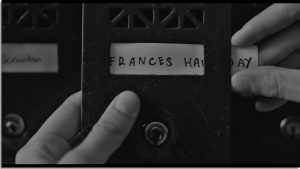
By the end of both Gerwig and Rooney’s stories, Frances may still not be a real person, but she is, at least, a little bit more like herself – the free one. And if you’ve ever been young, stuck in that hazy space of almost-adulthood, and unable to pin yourself down to some kind of constructed form of normality, maybe there’s a bit of her in you, too.
